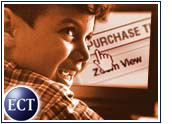
A study released Wednesday by online research firm Jupiter Communications says that kids and teens will only spend $4.9 billion (US$) online in 2005, but the research they do online will drive an estimated $21.4 billion in offline spending.
The study, released during Jupiter’s Digital Kids Forum in San Francisco, California, said that although teens often experiment with new and innovative online products, winning their time and attention is becoming increasingly difficult. Jupiter analysts suggested that businesses must broaden their online marketing efforts while focusing on driving offline purchases, not online transactions.
“While the online teen population is expected to continue to increase, teens will still spend a limited number of dollars online,” said Jupiter analyst Anya Sacharow. “To capture the greater offline influenced dollars, marketers must provide teens with information on their products and services that would impel them to purchase offline, and not solely concentrate on driving quick transactions online,” she added.
Low Priced Items
The Jupiter consumer survey of more than 1,500 teens aged 12 to 17 revealed that only 15 percent of teens actually purchase online, but that 49 percent use the Internet to research goods and services that they eventually buy offline.
When teens do purchase online, they generally buy low-priced items and media goods, including CDs, albums, books, videos, and clothing. However, their online research drives the offline purchase of more expensive items, including gaming consoles, PC peripherals and software.
Less Time Online
Teens are also spending less time online than their older counterparts, according to research released earlier this week by Media Metrix. In June, teens aged 12 to 17 spent an average of 303 minutes per month online. By comparison, young adults ages 18 to 34 are spending an average of 656 minutes online, and adults aged 35 to 49 are spending an average of 804 minutes online.
Jupiter’s analysts believe that lower Internet use by teens can be attributed to teens’ active schedules, the necessity of sharing online time at home with other family members, and the perception of the Internet as an entertainment and communication device rather than as a productivity tool.
Advice to Retailers
Jupiter’s advice to retailers is to use their online offerings to “educate, communicate, and reaffirm brand value and drive teens to offline sources for purchase.”
Jupiter also advised businesses to keep gender-based interests in mind when targeting teens. Girls tend to gravitate toward familiar offline brands, but boys are not as brand-sensitive and will search for content regardless of the source, according to the report.
Online content publishers can also profit from the online time that teens spend researching products and services. Jupiter says content firms that capture the time spent online by kids and teens can earn a large part of the expected $900 million in 2005 that businesses will invest to target this demographic.
Conflicting Reports?
The Jupiter study seems to fly in the face of a report released earlier this week by Nickelodeon Online/Harris Interactive stating that kids and young adults are spending $164 billion online. However, a closer look reveals that while the Jupiter survey looked only at teens aged 12 to 17, the Nickelodeon Online/Harris Interactive Poll surveyed kids and young adults aged 8 to 24.
The Nickelodeon Online/Harris Interactive Poll also showed that the biggest online spenders were teens and young adults aged 18 to 24. Median online spending in the 18 to 21 bracket was $900, as opposed to $1,200 for the 22 to 24 year-olds. Median spending among younger teens aged 13 to 15 was only $360, while teens aged 16 and 17 were only spending $540 online.
A number of recent studies have shown that younger teens are not spending money online because of parental restrictions and other barriers.
A survey released by PricewaterhouseCoopers showed that while 76 percent of adult Internet shoppers have made a purchase online, only 31 percent of connected teens aged 13 to 18 have bought something from an Internet shopping site.
The number one reason cited by teens for not shopping online was having to ask a parent to use a credit card.












































Social Media
See all Social Media